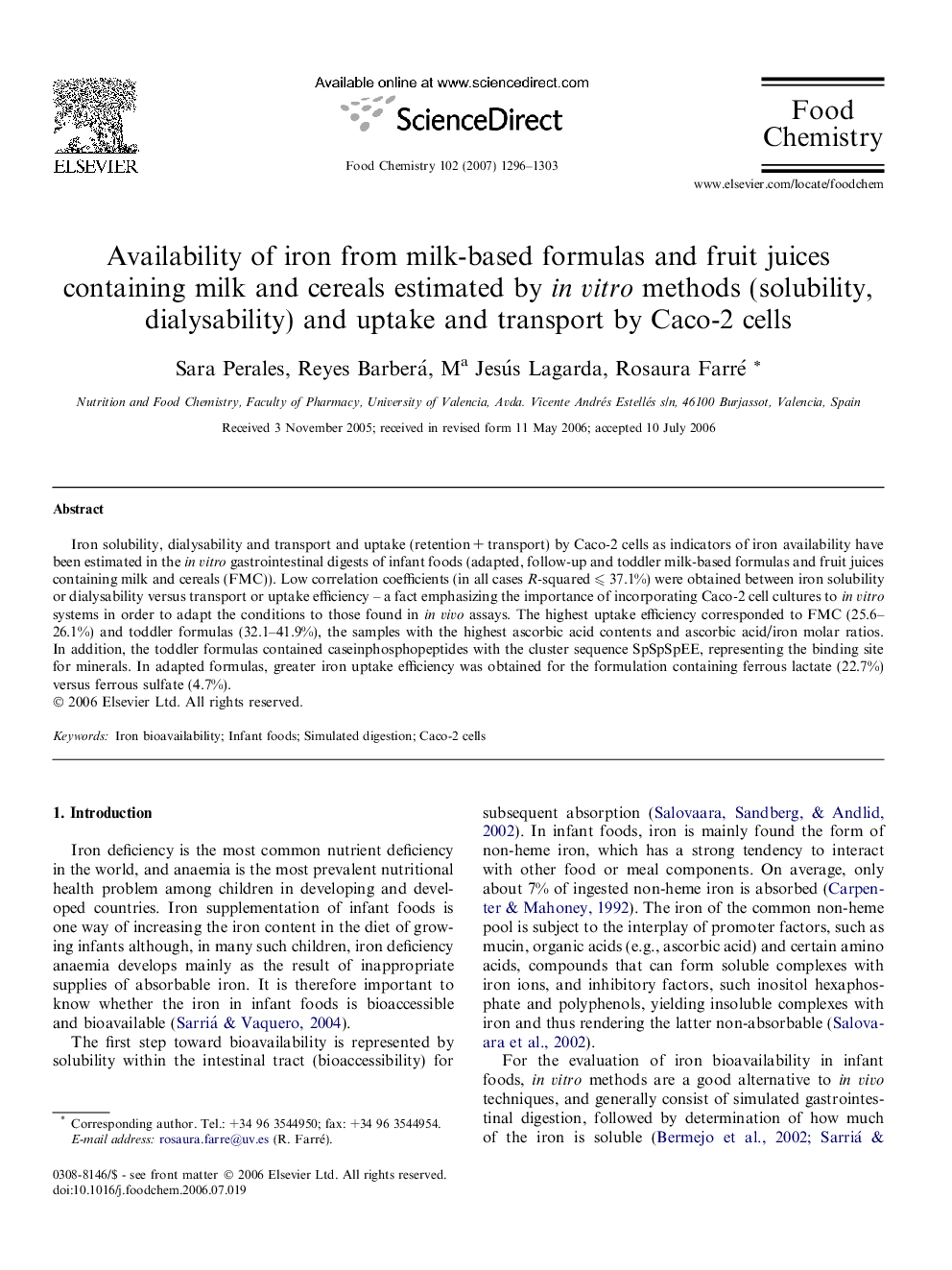| Article ID | Journal | Published Year | Pages | File Type |
|---|---|---|---|---|
| 1189795 | Food Chemistry | 2007 | 8 Pages |
Iron solubility, dialysability and transport and uptake (retention + transport) by Caco-2 cells as indicators of iron availability have been estimated in the in vitro gastrointestinal digests of infant foods (adapted, follow-up and toddler milk-based formulas and fruit juices containing milk and cereals (FMC)). Low correlation coefficients (in all cases R-squared ⩽ 37.1%) were obtained between iron solubility or dialysability versus transport or uptake efficiency – a fact emphasizing the importance of incorporating Caco-2 cell cultures to in vitro systems in order to adapt the conditions to those found in in vivo assays. The highest uptake efficiency corresponded to FMC (25.6–26.1%) and toddler formulas (32.1–41.9%), the samples with the highest ascorbic acid contents and ascorbic acid/iron molar ratios. In addition, the toddler formulas contained caseinphosphopeptides with the cluster sequence SpSpSpEE, representing the binding site for minerals. In adapted formulas, greater iron uptake efficiency was obtained for the formulation containing ferrous lactate (22.7%) versus ferrous sulfate (4.7%).
